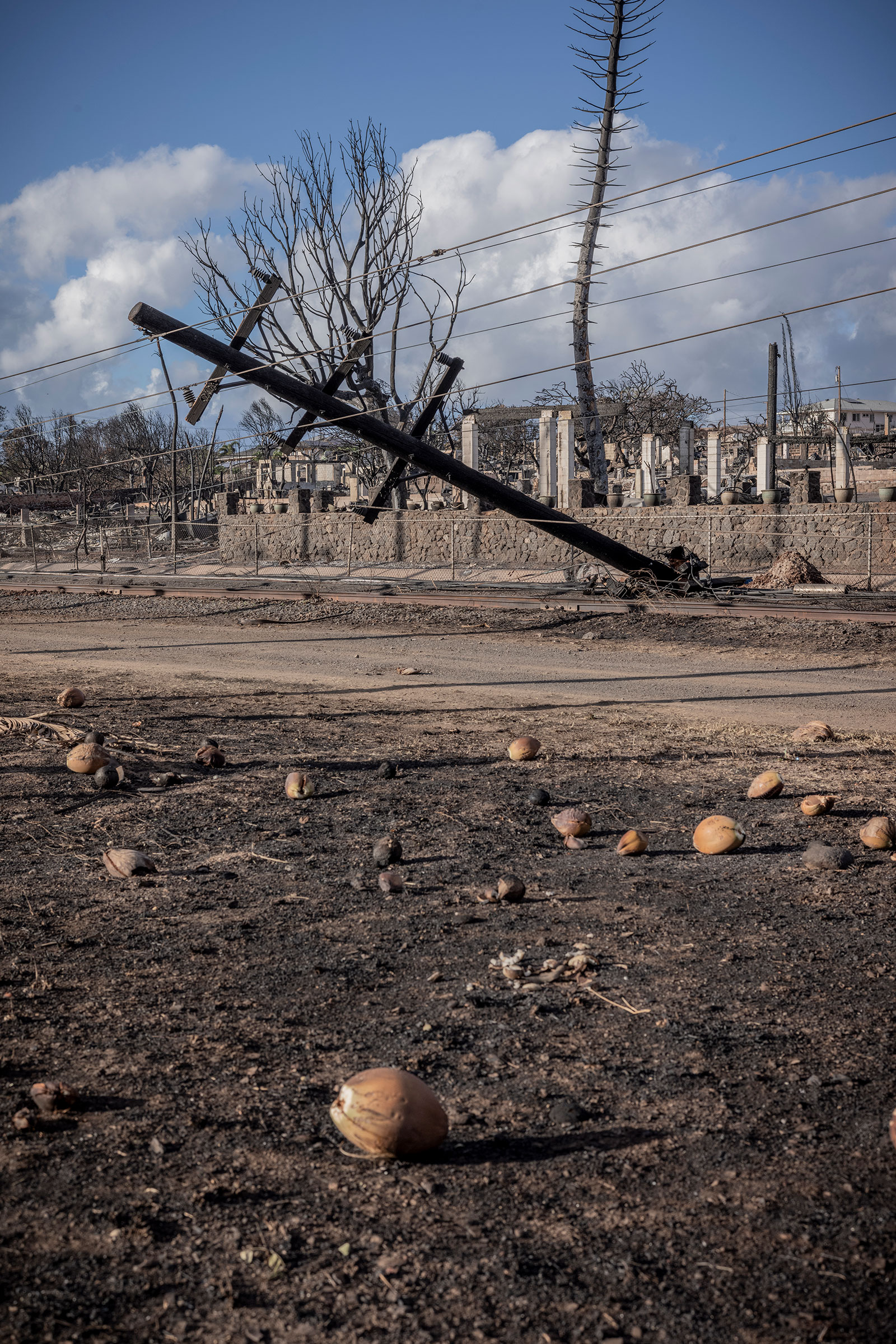
In the wake of wildfires that ripped through Maui last week, many are seeking answers about what caused the deadliest wildfire in the U.S. in over a century. That search has put Hawaiian Electric, which serves 95% of the island state’s 1.4 million residents, in the spotlight. The utility provider is facing a lawsuit over alleged inaction in the face of the destructive Lahaina wildfire that has killed at least 99 people on the island of Maui.
Though an official cause of the wildfire has not been reached, Lahaina residents filed a class action lawsuit against the utility company, alleging that, in the days before the fires broke out, the company “chose not to deenergize their power lines during the High Wind Watch and Red Flag Warning conditions for Maui before the Lahaina Fire started.” The filing also claims that the company failed to shut off power lines even after the fires began.
Read More: What Remains After the Flames: Scenes From the Ash-Colored Streets of Maui
No shut-off plan
Hawaiian Electric did not deploy a public power shutoff plan—an aggressive safety strategy used in other states, such as California, Oregon and Nevada—to proactively shut down power to communities with high wind conditions and increased risks of fire.
Intense wind gusts knocked down approximately 30 utility poles across the region on August 8, many onto trees and roads, and complicated evacuations, according to Maui County Mayor Richard Bissen, who confirmed that some electrical lines were energized when they hit the ground.
According to the Washington Post, Hawaiian Electric was aware that a power shut-off was an useful strategy, but didn’t include the step in it in its fire mitigation plans. Hawaiian Electric spokesman Jim Kelly, told CNN that the utility company does not have a formal shut-off program in place, since the power is needed to provide water for firefighters.
Read More: How to Help Those Affected by the Maui Wildfires
“Pre-emptive, short-notice power shut-offs have to be coordinated with first-responders and in Lahaina, electricity powers the pumps that provide the water needed for firefighting,” Kelly told the New York Times.
Research firm CoreLogic has estimated that the residential property damages stand at $1.3 billion, but Hawaii Gov. Josh Green estimates the losses “approach $6 billion.” On Friday, Hawaii Attorney General Anne Lopez announced a “comprehensive review” of the decisions and policies surrounding the fires, which the state’s emergency measures were largely unprepared for.
An emergency management plan published by the state of Hawaii in February 2022 rated wildfires as low and medium risk across the board for its effect on people, property, the environment, and emergency management program operations.
Read More: Why the Maui Wildfires Were So Deadly
The state’s outdoor emergency siren system—which it says is the largest in the world—is meant to alert residents to tsunamis and other natural disasters, but it did not activate during the fires.
Scrutiny and lawsuit
Power lines have been responsible for the spread of many destructive wildfires in the U.S. From 1992 to 2020 federal, state and local fire services dealt with 32,652 powerline-ignited wildfires across the country, according to Inside Climate News. In California alone, the electric company PG&E has been blamed for more than 30 wildfires since 2017 that wiped out more than 23,000 homes and businesses and killed more than 100 people. The company recently reached a $150 million settlement for its involvement in the 2020 Zogg fires.
Documents filed in the Hawaiian Electric lawsuit allege that the company had studied wildfire mitigation plans filed by California utility companies, which included a shut-off plan during high wind and so-called “red flag”—when warm temperatures, low humidity, and strong winds combine to produce an increased fire risk—conditions to prevent wildfires. But the documents allege that Hawaiian Electric never created a plan of its own.
In an emailed statement to TIME, Hawaiian Electric said it does not comment on pending litigation. "Our immediate focus is on supporting emergency response efforts on Maui and restoring power for our customers and communities as quickly as possible," the statement added. "At this early stage, the cause of the fire has not been determined and we will work with the state and county as they conduct their review."
Read more: What to Know About the Government Response to the Maui Wildfires
Amid the scrutiny, Hawaiian Electric has seen its share price tumble, plunging over 40% to a 13-year low, on Monday morning following the lawsuit. The company’s shares were down more than 30% on Tuesday.
Government filings show that the company reported its plans to make infrastructure more resilient, including putting lines underground in vulnerable areas, hardening poles and launching a program to remove hazardous trees.
“The risk of a utility system causing a wildfire ignition is significant,” the company wrote in one filing, noting that a large objective was to “minimize the probability of the Companies’ facilities becoming the origin or contributing source of ignition for a wildfire”.
More Must-Reads from TIME
- Donald Trump Is TIME's 2024 Person of the Year
- Why We Chose Trump as Person of the Year
- Is Intermittent Fasting Good or Bad for You?
- The 100 Must-Read Books of 2024
- The 20 Best Christmas TV Episodes
- Column: If Optimism Feels Ridiculous Now, Try Hope
- The Future of Climate Action Is Trade Policy
- Merle Bombardieri Is Helping People Make the Baby Decision
Write to Simmone Shah at simmone.shah@time.com